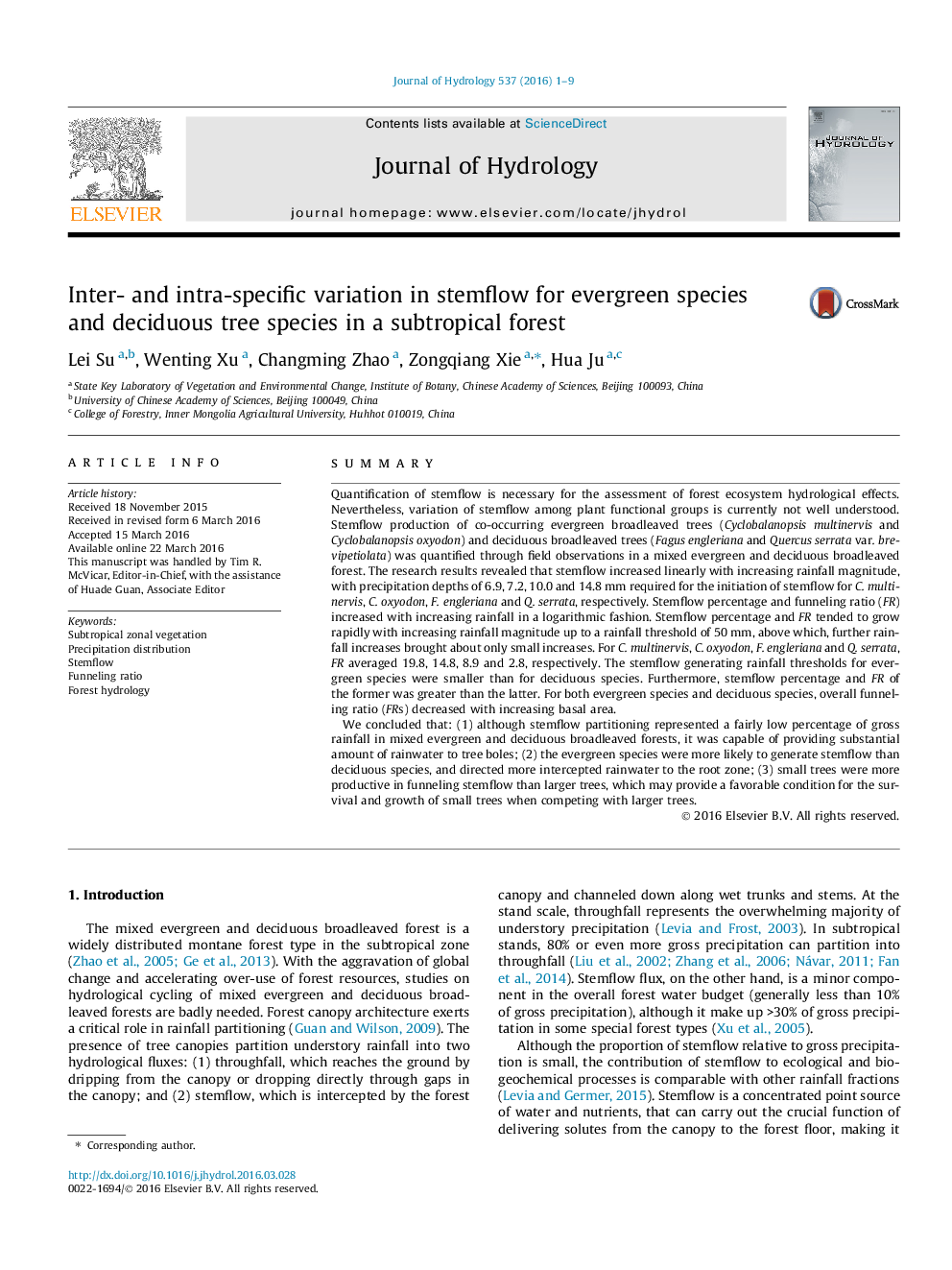| کد مقاله | کد نشریه | سال انتشار | مقاله انگلیسی | نسخه تمام متن |
|---|---|---|---|---|
| 6409767 | 1629915 | 2016 | 9 صفحه PDF | دانلود رایگان |
- We quantified the stemflow of a mixed evergreen and deciduous broadleaved forest.
- Stemflow is more easily initiated by evergreen species than deciduous species.
- Evergreen species direct more stemflow than deciduous species in subtropical forest.
- Small trees are more productive in funneling stemflow than large trees.
SummaryQuantification of stemflow is necessary for the assessment of forest ecosystem hydrological effects. Nevertheless, variation of stemflow among plant functional groups is currently not well understood. Stemflow production of co-occurring evergreen broadleaved trees (Cyclobalanopsis multinervis and Cyclobalanopsis oxyodon) and deciduous broadleaved trees (Fagus engleriana and Quercus serrata var. brevipetiolata) was quantified through field observations in a mixed evergreen and deciduous broadleaved forest. The research results revealed that stemflow increased linearly with increasing rainfall magnitude, with precipitation depths of 6.9, 7.2, 10.0 and 14.8Â mm required for the initiation of stemflow for C. multinervis, C. oxyodon, F. engleriana and Q. serrata, respectively. Stemflow percentage and funneling ratio (FR) increased with increasing rainfall in a logarithmic fashion. Stemflow percentage and FR tended to grow rapidly with increasing rainfall magnitude up to a rainfall threshold of 50Â mm, above which, further rainfall increases brought about only small increases. For C. multinervis, C. oxyodon, F. engleriana and Q. serrata, FR averaged 19.8, 14.8, 8.9 and 2.8, respectively. The stemflow generating rainfall thresholds for evergreen species were smaller than for deciduous species. Furthermore, stemflow percentage and FR of the former was greater than the latter. For both evergreen species and deciduous species, overall funneling ratio (FRs) decreased with increasing basal area.We concluded that: (1) although stemflow partitioning represented a fairly low percentage of gross rainfall in mixed evergreen and deciduous broadleaved forests, it was capable of providing substantial amount of rainwater to tree boles; (2) the evergreen species were more likely to generate stemflow than deciduous species, and directed more intercepted rainwater to the root zone; (3) small trees were more productive in funneling stemflow than larger trees, which may provide a favorable condition for the survival and growth of small trees when competing with larger trees.
Journal: Journal of Hydrology - Volume 537, June 2016, Pages 1-9
